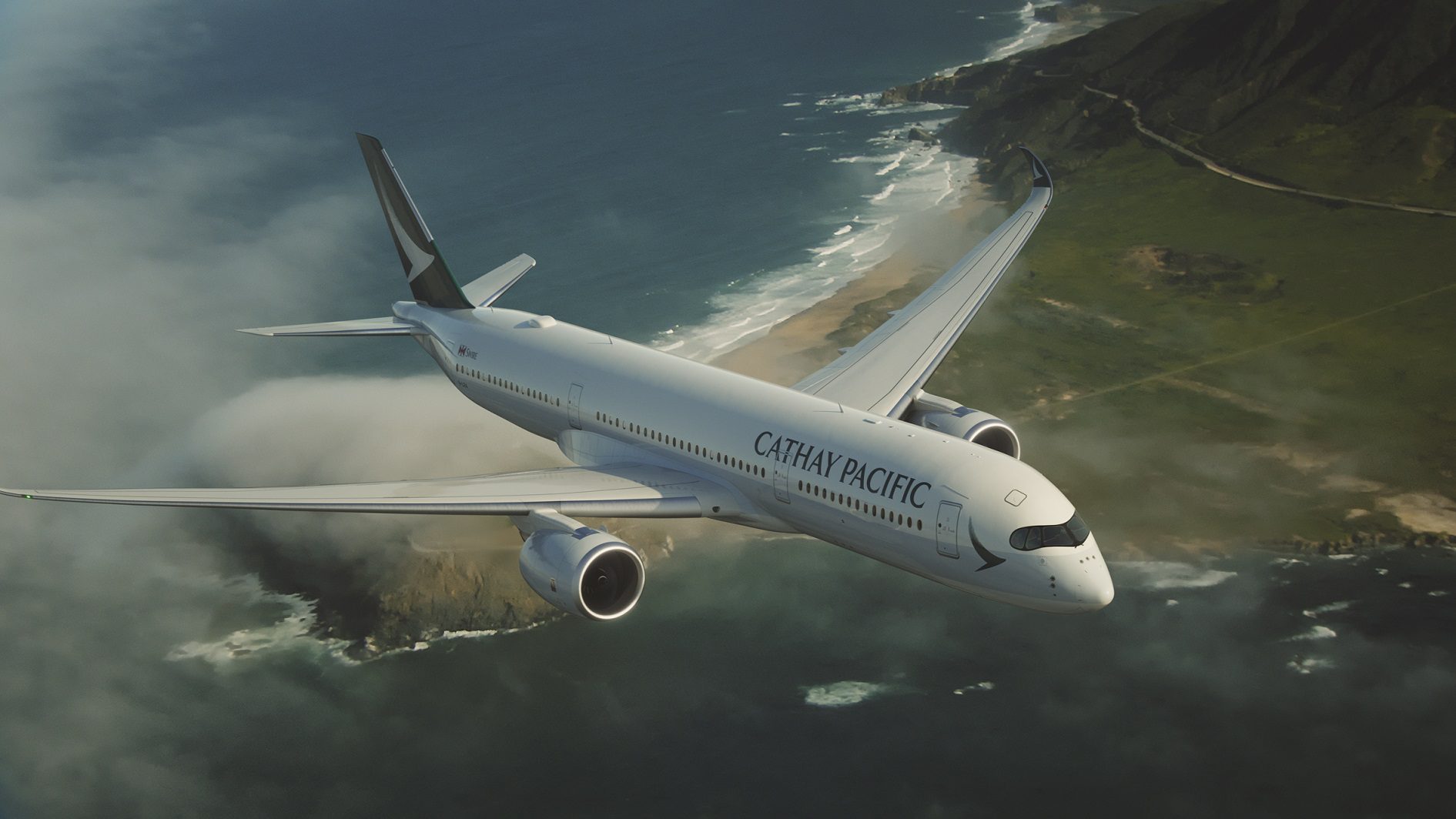
Cathay Pacific introduces Premium Economy to Dubai as it welcomes the Airbus A350 900
The uncertain pace of vaccination rollouts and the related relaxing of travel restrictions dampen the expectations of Cathay Pacific about a swift recovery. The Hong Kong-based carrier hopes to operate at thirty percent capacity for the rest of this year, it said on August 11 in its HY1 interim results report. But Cathay’s hopes depend on Hong Kong’s reopening.
Cathay carried only 157.000 passengers between January and June this year, -96.4 percent compared to last year. This translates into an HY1 loss of HK$7.564 billion, an improvement of last year’s HK$ 9.864 billion. The result includes a HK$500 million impairment on eleven aircraft that are unlikely to return to service with Cathay and subsidiary Hong Kong Express.
The operating loss also improved to HK$5.435 billion compared to HK$8.735 billion. However, total revenues were significantly down to HK$15.854 billion from HK$27.669 billion. Passenger revenues dropped to just HK$748 million from HK$11.056 billion as capacity was reduced by 85 percent. Cargo revenues were slightly up to HK$12.702 billion from HK$12.692 billion, although tons carried were down 17.7 percent to 549.000. Operating expenses were -39.2 percent to HK$21.635 billion. In 2020, the airline reported a HK$21.4 billion loss.
Quarantine rules hit operations hard
Cathay’s passenger and cargo operations were not only affected by the worldwide travel restrictions but also by quarantine rules that were introduced in February. Not only did they discourage travelers from visiting Hong Kong but they also forced the airline to introduce creative rosters for its staff, who have to work 21 days on duty followed by fourteen days in quarantine and staying in hotels when not flying. The situation improved as restrictions were eased in May, but this came too late to have an effect on the half-year results.
While still 77.6 percent down compared to last year, capacity to North America in available seat kilometers was 1.712 million and by far the highest of all regions. In May, Cathay saw robust demand from travelers from Hong Kong and mainland China on its New York route. Traffic to Europe saw some ‘pockets of demand’ but remains heavily restricted, notably that to the UK. North Asia and China showed signs of strong recovery, while Southeast Asia was good until various restrictions were imposed as the Delta variant struck the region. Asia Pacific remains to be weak.
Losses at subsidiary Hong Kong Express deepened. (HK Express)
Cathay’s subsidiaries also struggled during the first six months. Hong Kong Express reported a HK$976 million net loss compared to HK$779 million for the same period last year, mainly caused by the quarantine measures between February and May. Its revenues were just HK$10 million versus HK$844 million last year. Cargo airline Air Hong Kong benefitted from improved business and generated HK$374 million profit compared to HK$363 million last year.
Cathay Pacific continued to be focused on prudent cost management and reduced non-fuel costs by 33.5 percent. As the crisis continued, the group announced a third unpaid leave scheme that was subscribed to by eighty percent of its staff while others opted for voluntary separation or early retirement. Cathay ended June with HK$32.5 billion in unrestricted liquidity, partly thanks to HK$6.74 billion that was raised from a convertible bond and HK$650 million from a bond issue. It has another HK$7.8 billion available in the form of a loan facility, of which the drawdown period was extended by a year until June 2022. The Group has HK$75.139 billion in net borrowings.
Despite the dire situation, new aircraft deliveries continue
By the end of June, the group had a fleet of 238 aircraft, including seventeen that will be either reassigned from Cathay Dragon to Cathay Pacific and Hong Kong Express or are returned to the lessors. Forty percent or 89 aircraft remain to be stored outside Hong Kong, with numerous CP aircraft parked in Alice Springs. Two more passenger aircraft will be modified for cargo services, bringing the number of ‘preighters’ to six.
Despite the dire situation, the airline will take delivery of new aircraft. It expects two Airbus A321neo’s this year and six in 2022, with four scheduled for 2023 and beyond. Another A350-900 is due this year plus two more in 2023 and beyond, while an A350-1000 will arrive in 2022. Cathay’s fleet overview continues to include the 21 Boeing 777-9s that are due in 2023 or beyond. Hong Kong Express will take delivery of one A321neo in 2022 and fifteen from 2023 and beyond.
As restrictions continue and the rate of vaccinations remains fluid, Cathay expects to grow its capacity in Q4 no higher than thirty percent, said chairman Patrick Healy. Cargo remains a pillar of the current business model. Hoping on a usually stronger HY2, the group expects to limit monthly cash burn to HK$1.0 billion, slightly higher than the HK$0.9 billion in HY1. This scenario only applies if quarantine measures are further reduced and Hong Kong reopens, and restrictions elsewhere are also lifted.
Worries about retaining slots in Europe
The South China Morning Post reports that Cathay is looking at new business model options like that of Air Asia, which should encourage customers to spend more money on services and goods that could be purchased through the airline. The newspaper also quotes Chief Customer and Commercial Officer Ronald Lam, who expressed his worries that Cathay could lose slots at airports within the European Union if the new fifty-percent slot rule becomes active this winter. At the current level of operations, the airline is unable to fulfill this number and risk losing out.
Views: 0




